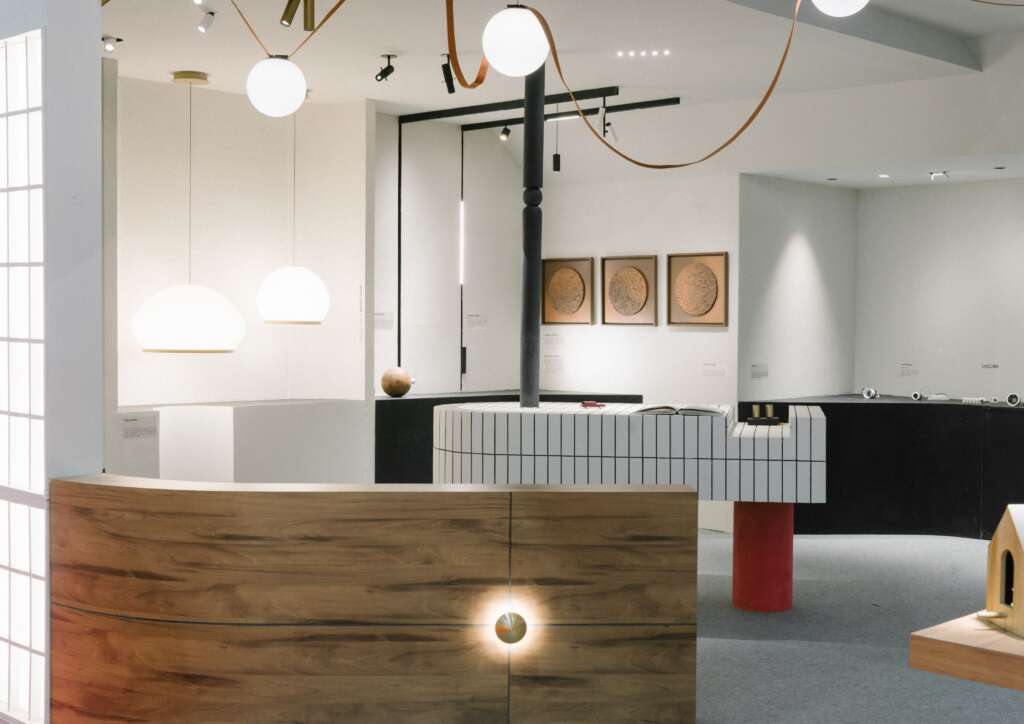Share This Article
In the vibrant commercial landscape of Delhi, Showtime by Studio Dot reimagines what a lighting showroom can be—not a display, but a dialogue. Set up as a temporary installation for Atcom Mega, this 800 sq. ft. pop-up store transforms the way we experience lighting by letting the products do the talking while the space whispers in quiet support.
Designed by architects Anmol Arora and Shubhit Khurana of Studio Dot, the project is a spatial response to a retail philosophy where design plays a supporting role to storytelling. The client’s brief was clear: don’t just sell lights—build a memory. With this in mind, the studio crafted a minimal, open plan that guides the visitor through a curated journey rather than a traditional shopping layout.

At the heart of the space is a central pin table that organizes circulation and divides the store into two distinct zones—one for immersive product display, and the other for discussion and engagement. The entrance is marked by a braided light feature that leads visitors into a choreographed exploration of Atcom’s lighting collections, subtly reinforced by props, textures, and visual cues.
What elevates Showtime beyond a regular pop-up is its commitment to interaction. A custom-designed photo booth, dramatically lit by Atcom fixtures, invites visitors to step in and become part of the narrative. The louvered walls allow a visual dialogue with the outside world, making the store feel open, responsive, and approachable.

Materiality is quiet yet intentional. The neutral palette and minimal finishes act as a neutral backdrop to the vibrant lighting, while curated bursts of color animate the space with energy and curiosity. Everything is designed to make the products shine—literally and metaphorically.

Behind this clever execution is Studio Dot, a Delhi-based architectural design practice led by Anmol Arora and Shubhit Khurana. Known for their strong conceptual thinking and emphasis on storytelling through spatial design, the studio’s work spans retail, experiential spaces, and installations. Their design language leans towards clarity, user-centered layouts, and evocative atmospheres.
With Showtime, Studio Dot has created more than a store—they’ve orchestrated an experience. One where the lights aren’t just fixtures on a shelf, but characters in a spatial performance, and where architecture steps back so the story can step forward.











